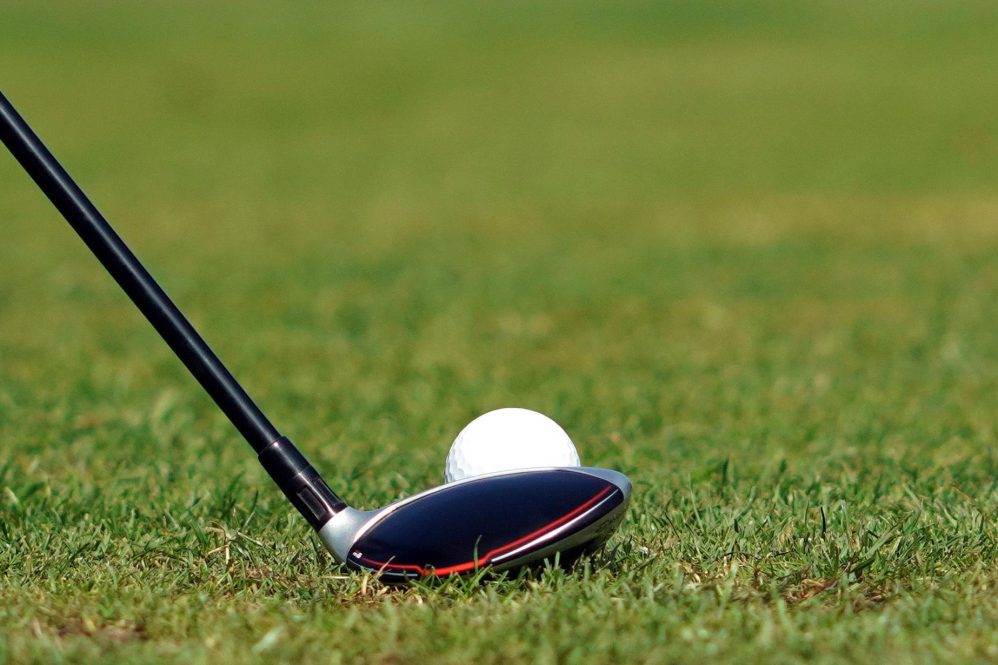Etched into the annals of human history, golf, the regal and time-honored game, stands as a poignant testament to human ingenuity and the indomitable pursuit of excellence. Like a timeless tapestry, its evolution weaves together intricate threads of culture, tradition, and technological advancement, beckoning us on an enthralling historical exploration. Through the lens of meticulous research and scholarly analysis, this treatise endeavors to unravel the rich narrative of golf’s evolution, shedding light on its origins, influential figures, and transformative moments.
– The Ancient Origins of Golf: Tracing the Roots of the Royal and Ancient Game
Delving into the Birthplace of Golf: The Scottish Highlands
Folklore traces the genesis of golf to the medieval Scottish Highlands, where shepherds tended their flocks with curved sticks. They would use these clubs to strike pebbles along the rolling terrain, engaging in a rudimentary form of the game. Over time, these humble beginnings evolved into the formalized sport we recognize today, with standardized rules and equipment.
The St. Andrews Links: A Revered Sanctuary of Golf
The legendary St. Andrews Links, situated on the eastern coast of Scotland, holds a hallowed place in the annals of golf. Established in the 15th century, it is considered the birthplace of the modern game. Its hallowed fairways and greens have witnessed countless historic matches and have solidified St. Andrews’ reputation as the “Home of Golf.” The game’s traditions and etiquette have been meticulously preserved here, making it a pilgrimage site for golfers worldwide.
| Century | Key Developments |
|—|—|
| 15th | Introduction of golf to Scotland; establishment of the St. Andrews Links |
| 18th | Standardization of rules and equipment; formation of the Royal and Ancient Golf Club of St. Andrews |
| 19th | Spread of golf to other parts of the world; establishment of professional tournaments |
– The Evolution of Golf Course Design: From Humble Beginnings to Modern Masterpieces
The Evolution of Golf Course Design
Through the centuries, the design of golf courses has undergone a remarkable evolution, reflecting both the changing game and the ingenuity of its creators. The origins of golf can be traced back to the 15th century in Scotland, where seaside links courses were played on natural terrain. These early courses were characterized by wide fairways, deep bunkers, and fast-running greens, testing golfers’ skills in wind and weather.
As the game’s popularity grew in the 18th and 19th centuries, courses began to be designed with more deliberate intent. Old Tom Morris, considered the grandfather of golf course architecture, developed the first true “championship” courses, featuring strategically placed hazards and undulating greens. In the early 20th century, designers like James Braid, Harry Colt, and Alister MacKenzie introduced a greater focus on aesthetics, creating courses that blended seamlessly with the surrounding landscape.
Today, golf course design has reached new heights of sophistication. Computer-aided design and advanced construction techniques have enabled architects to create courses with remarkable variety, precision, and playability. Courses can now be tailored to meet the demands of all levels of golfers, from beginner to professional. The evolution of golf course design is an ongoing story, as new technologies and design philosophies continue to shape the future of the game.
| Era | Characteristics |
|—|—|
| 15th-17th Centuries: Links Courses | Wide fairways, deep bunkers, fast greens, natural terrain |
| 18th-19th Centuries: Championship Courses | Strategically placed hazards, undulating greens, focus on playability |
| Early 20th Century: Aesthetic Era | Seamless integration with landscape, scenic beauty, player comfort |
– The Rise of Competitive Golf: Birth of Major Championships and International Prestige
The competitive spirit of golf flourished during the late 19th century, leading to the establishment of major championships that showcased the game’s elite. In 1860, the Open Championship, the oldest of the four majors, was inaugurated at Prestwick Golf Club in Scotland. This event attracted top golfers from around the British Isles and set the stage for international competition.
As golf’s popularity spread, other major championships emerged. In 1895, the U.S. Open was established at Newport Country Club in Rhode Island, followed by the U.S. Women’s Open in 1946. The Masters Tournament debuted in 1934 at Augusta National Golf Club in Georgia, which quickly became one of the most prestigious events in the sport. Collectively, these major championships elevated the profile of competitive golf and created opportunities for players to showcase their skills on a global scale.
The pursuit of international prestige drove the development of national teams and international competitions. In 1926, the Walker Cup was created for a biennial match between amateur golfers from the United States and Great Britain and Ireland. The Ryder Cup, a similar competition for professional golfers, followed in 1927. These events fostered international camaraderie and fueled the competitive fire, propelling the game to new heights of excitement and recognition.
– The Evolution of Golf Equipment: Technological Advancements and Performance Enhancements
The Evolution of Golf Equipment: Technological Advancements and Performance Enhancements
The evolution of golf equipment has played a pivotal role in shaping the game’s modern landscape. From early wooden clubs to the sophisticated equipment of today, technology has continuously pushed the boundaries of performance and precision.
Tee Shots – Drivers: For nearly a century after the adoption of the golf ball, wooden drivers were the mainstay for tee shots. It was not until 1979 when titanium faced drivers started appearing and later in the 1990s companies started using graphite, leading to a step-change in driving distance and landing accuracy. Over the years smaller clubheads have been allowed, and stronger, lighter and more aerodynamic materials have continually been used, like carbon fiber. These drivers have lighter shafts promoting clubhead speed, lower club weights for additional swing speed, and angle adjustable hosels to promote tuning for each user’s need.
Enhancements Beyond Tee Shots – Equipment manufacturers have pursued performance-enhancing attributes beyond tee shots, introducing technological innovations to each club category, like shaping irons with hollow heads and variable density face technology to improve precision, distance and spin control. Fairway woods have been enhanced with carbon fiber crowns to lower club weight for maximizing clubhead speed, and hybrid clubs combine design elements of both irons and fairway woods to provide options for a variety of approaches. Wedge clubs now commonly use cavity-back designs, and putters come with varied hosel and shaft options for enhanced feel and accuracy.
| Equipment Category | Tech Advancement | Performance Enhancement |
| Irons | Hollow heads, variable density face | Precision, distance, spin control |
| Fairway woods | Carbon fiber crowns, low weight | Clubhead speed, launch characteristics |
| Hybrids | Combination of iron/fairway designs | Versatility, improved approach shot options |
| Wedges | Cavity-back designs | Feel, spin control, versatility around greens |
| Putters | Varied hosel/shaft designs | Feel, alignment, accuracy, distance control |
– Golf as a Social Phenomenon: From Aristocratic Pastime to Global Sport
Golf’s allure has long extended beyond its sporting nature, captivating the interest of diverse social strata through the centuries. From its aristocratic origins in the rolling hills of Scotland, golf gradually evolved into a global phenomenon, accessible to players of all backgrounds. This captivating journey reflects the transformative power of the game, mirroring societal changes and technological advancements that shaped its growth and popularity.
The early days of golf were marked by an exclusive and elite character, with the game primarily reserved for the upper echelons of society. As it gained popularity, golf courses sprung up in the verdant landscapes surrounding palaces and noble estates, and royal patronage further cemented its aristocratic status. Over time, however, the game’s appeal began to broaden, with the rise of new courses accessible to a wider range of players. The invention of the steel club and the development of the golf ball in the late 19th century further democratized the game, making it more accessible and enjoyable for enthusiasts of all skill levels.
Today, golf remains a beloved sport enjoyed by millions worldwide, from seasoned professionals to recreational players. Its universal appeal stems from a unique blend of physical prowess, mental acuity, and strategic decision-making. Golf courses are found in every corner of the globe, from the verdant fairways of St Andrews to championship links along the sun-kissed beaches of Florida. Whether played for competition, recreation, or social interaction, golf has become an integral part of diverse cultures and a testament to its enduring legacy as a global sport.
the historical exploration of golf, as chronicled in “The Evolution of the Royal and Ancient Game,” reveals the enduring allure and transformative journey of this ancient sport. Its roots, traced back centuries in Scotland, have intertwined with cultural, technological, and societal developments, shaping the game’s customs, rules, and enduring appeal. From its initial form as a recreational pastime to its emergence as a global phenomenon, golf has left an indelible mark on history. Its intricate web of traditions, its challenging courses, and its ability to captivate and inspire continue to resonate with enthusiasts worldwide. As the Royal and Ancient Game continues to evolve, it remains a testament to the indomitable spirit of human ingenuity and the timeless pursuit of excellence.





